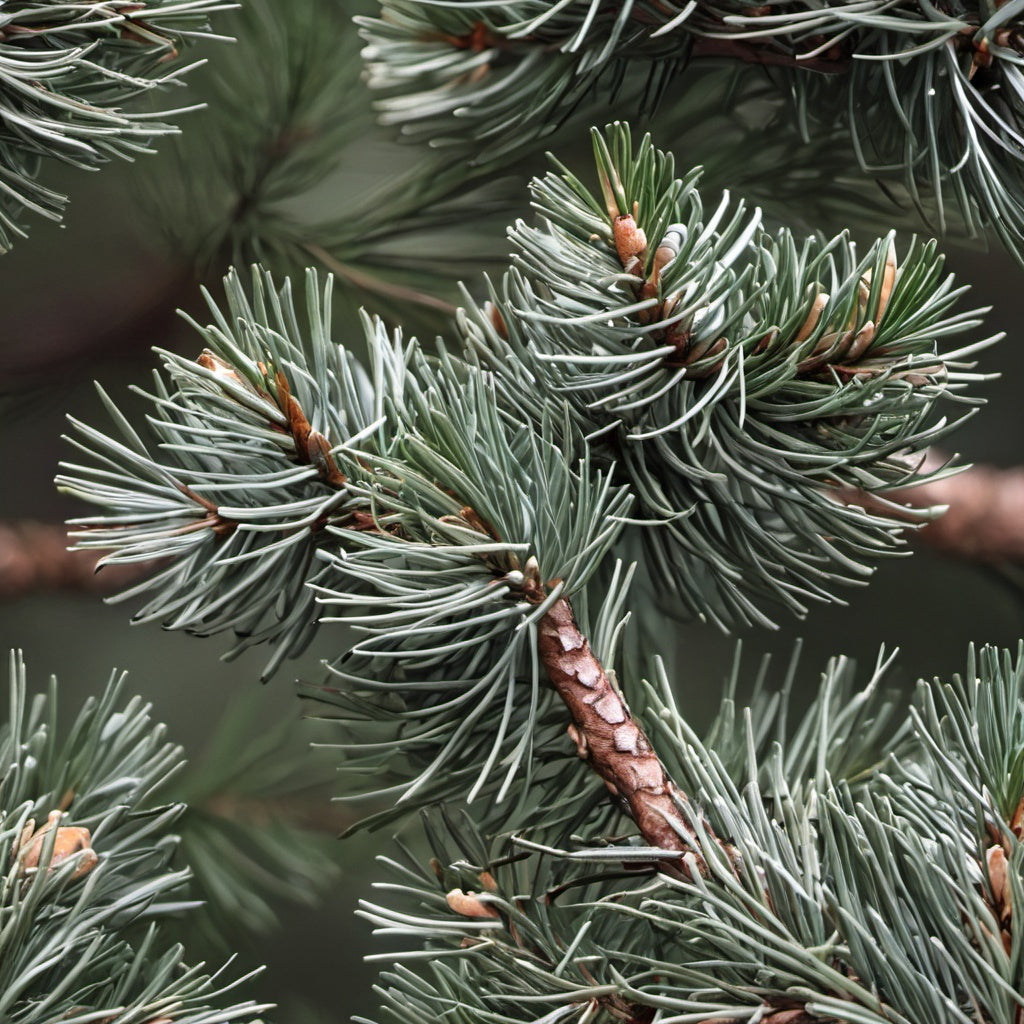Western Himalayan Pine Tree Seeds
Western Himalayan Pine Tree Seeds
Couldn't load pickup availability
Western Himalayan Pine Tree Seeds
(Pinus griffithi, wallichiana)
Pinus wallichiana, also known as the Western Himalayan Pine, Blue pine, or Bhutan pine, is a large coniferous tree belonging to the family Pinaceae. It is widely distributed in the Himalayan region, ranging from Afghanistan to Bhutan and parts of northern Myanmar. The species thrives in elevations between 1,800 to 4,300 meters and is highly valued for its timber, ornamental appeal, and ecological significance.
Morphological Features:
- Height and Growth: Mature trees can grow up to 90-150 feet tall, with a trunk diameter of about 3-6 feet.
- Needles: The species is distinguished by its long, slender, and flexible needles, which are grouped in bundles of five. The needles have a bluish-green hue, lending it the name "blue pine."
- Cones: The cones are cylindrical, 15–32 cm long, and often pendulous. They are initially green and turn brown upon maturity, taking about two years to mature.
- Bark: The bark is grayish-brown, developing fissures with age and flaking off in thin scales.
Habitat and Ecology:
- Native Range: Found in the Himalayas, including Afghanistan, Pakistan, India, Nepal, Bhutan, and northern Myanmar.
- Preferred Climate: This tree grows well in temperate climates and tolerates cool, moist conditions. It thrives in well-drained, slightly acidic soils.
- Role in Ecosystem: The Western Himalayan tree plays a crucial role in preventing soil erosion and stabilizing slopes in mountainous regions. It is often used in afforestation programs.
Uses:
- Timber: The wood is soft and light, making it suitable for construction, furniture, and paper production.
- Resin: The tree yields resin, which is used for various industrial and medicinal purposes.
- Ornamental: Due to its attractive appearance, it is often planted in parks and gardens.
- Medicinal Uses: In traditional medicine, extracts from the tree have been used to treat respiratory and inflammatory conditions.
Cultural and Symbolic Importance:
- In many Himalayan cultures, the Western Himalayan tree is considered a sacred tree. It also features prominently in local folklore and traditional practices.
Zones: 7 to 9
Germination Range: 50-70%
Stratification Requirement: None required
Planting Instructions:
Prepare a well-draining potting mix using a blend of loamy soil, sand, and organic compost to mimic the natural growing conditions of the Western Himalayas. Fill seed trays or pots with this mixture, leaving room to sow the seeds. Plant the seeds at a depth approximately twice their diameter and gently cover them with soil. Water the soil lightly to ensure it is evenly moist but not waterlogged, as excess water can cause fungal issues or seed rot. Place the containers in a location with indirect sunlight and maintain a consistent temperature suitable for germination, which often ranges between 15–25°C (59–77°F).
Regular care is crucial during the germination period. Keep the soil consistently moist, and check daily for signs of sprouting. Germination times can vary widely, with some seeds taking a few weeks, while others may require months. If the species you are growing is native to higher altitudes, ensure they receive cooler temperatures or gradual exposure to natural conditions. Once seedlings develop their first true leaves, they can be carefully transplanted into larger pots or a prepared garden bed. Acclimatize the young trees to outdoor conditions gradually, exposing them to increasing amounts of sunlight and wind over a few weeks before planting them in their permanent location. Choose a planting site with adequate space, sunlight, and soil that matches the tree’s native habitat to support healthy long-term growth.


